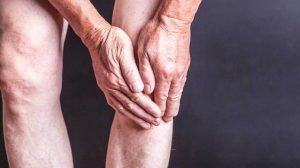Strength training is an integral part of a successful soccer players routine. It has two main benefits: injury prevention and to improve athletic performance.
WHAT SHOULD IT INCLUDE?
The strength training should focus on the main muscle groups used during soccer: hamstring, quads, calves, gluts and core. The session should take into account the skills required (speed, acceleration, agility) and be individualized to each athlete. Strength training can include the use of machine weights, free weights, resistance bands, plyometric exercises and body weight drills. There are multiple benefits to strength training besides muscle strength including an improvement in bone density and self-esteem. Some examples of common exercises as part of a soccer specific strength program:
-Bulgarian split squat: targets gluts and quads which are important with speed and acceleration
-Copenhagen adductor exercise: good for prevention of groin strains
-Lateral hurdle jumps: plyometric exercise aimed to improve agility with change of direction
HOW LONG SHOULD IT RUN FOR?
Each session should always start with a 5-10 minute warm up and finish with a 5-10 minute cool down and aim to include 6-8 exercises. The frequency of sessions will depend of the point of the season, the athlete’s previous strength training experience and goals of the athlete. Sessions should be completed once per week during the season (to avoid overloading the athlete) and increased to 2-3 sessions per week during the off-season/pre-season. An increase of strength by 30-50% has been reported after 8-12 weeks of a well-designed exercise program.
CAN IT BE DONE AT HOME OR DOES IT HAVE TO BE AT A GYM?
Strength training doesn’t have to be completed in a gym setting. It could be done at home using body weight, resistance bands and some objects around the house. It could also be done in a group setting. This often improves the motivation of the athletes (and the likelihood of some friendly banter!) and reduces the cost too. Our physio’s Chris and Tim will be starting Young Athlete Development Strength and Conditioning sessions here at the clinic soon which would be perfect for a small group of team mates looking to introduce strength training into their routine. Most sport excellence programs have gym facilities so it can be incorporated into your school-based sessions if you choose.
HOW DO I GET STARTED ON A STRENGTH PROGRAM?
Jess has a special interest in soccer injuries and performance and has a lot of experience designing soccer specific programs. She will have a discussion with you about your playing position, previous injuries, goals for strength training and then set you up with a program to work on. For someone who hasn’t had a lot of experience with gym training, it might be beneficial to begin supervised sessions to ensure your technique is correct and then transition to an independent program with updates as needed. Physiologic has a fully equipped clinic gym to use for supervised sessions. If group training is more your thing, then Jess can transition you to the Young Athlete development squad with Tim & Chris or work with you to find something suitable.
Jess Norton
Senior Physiotherapist
Dr Mark Hancock, Professor of Physiotherapy, and Tash Pocovi, PhD candidate, Macquarie University
If your low back is playing up during lockdown, you’re not alone. Low back pain is a common condition experienced by 80 per cent of people at least once in their lifetime. While most episodes settle relatively quickly, approximately 70 per cent of people will experience a recurrence over the next 12 months. Exercise is a common way that people manage low back pain, and research shows that popular forms of exercise such as pilates and yoga can be effective in managing and preventing low back pain. But with COVID-19 restrictions and subsequent lockdowns, what can one do when gyms, pools and studios are shut for the foreseeable future?
Here are some tips to help keep your back healthy and prevent low back pain during this time:
1. Change positions often
Think about what postures you spend most of your day in, and what movements make your low back pain better or worse. If like most people you have a desk job and sit for long periods of time, make a plan to stand, stretch and have a quick walk regularly throughout the day. Some people find using an alarm that goes off every hour or two helps them to remember to change positions when they are focused on work or house duties.
2. Make exercise a part of your daily routine
Make an “appointment” with yourself to exercise daily: even consider blocking off time in your diary to ensure you make time for you physical and mental wellbeing. For example, you could set 10 to 10.30am as your time to go for a walk.
Researchers at Macquarie University are studying whether an individualised walking and education program may assist Australians with preventing low back pain (for more information visit the WalkBack HYPERLINK “https://www.walkbacktrial.com/” Trial website).
3. Buddy up
Exercising can be more fun when you have company! Get accountable and ask your partner or family member to be your exercise buddy and you can do it together. If you live alone or cannot leave home due to social distancing restrictions, think creatively, perhaps exercise together over video conferencing platforms such as FaceTime or Zoom.
4. Get help if pain does not improve
Most back pain settles well and can be self-managed using simple strategies like those mentioned above. However, if you have ongoing pain, it’s helpful to seek care from a physiotherapist. Our physiotherapist, Hayley, has a special interest in managing low back pain.
Give our clinic a call on (07) 5578 7155 to see Hayley.
References – Hartvigsen, J., M. Hancock, A. Kongsted, et al., What low back pain is and why we need to pay attention. The Lancet, 2018.O’Sullivan, P.B., J. Caneiro, K. O’Sullivan, et al., Back to basics: 10 facts every person should know about back pain. 2020, BMJ Publishing Group Ltd and British Association of Sport and Exercise Medicine.
Low back pain is very common. Up to 80% of people will experience this type of pain in their life. For up to 30% of people, their pain may become persistent (lasting for longer than 12 weeks) and interfere with many aspects of their life. This can look like having difficulties in the ability to do day to day activities, exercise, work and be engaged in social activities and hobbies which you enjoy.
Very similar to our general health, the health of the structures of our lower back is maintained through regular movement, keeping the back, trunk and legs strong, exercising regularly, maintaining a healthy body weight, caring for our mental health, regularly sleeping well, and not smoking or drinking too much alcohol.
It’s very important to understand that back pain usually improves with the right treatment even if you have had it for many years. Our Musculoskeletal Physiotherapist, Hayley, has a special interest in managing low back pain. She can help you to understand why you have pain, and get you back moving, active and living again. Call our friendly team for assistance today.
References – Hartvigsen, J., M. Hancock, A. Kongsted, et al., What low back pain is and why we need to pay attention. The Lancet, 2018.O’Sullivan, P.B., J. Caneiro, K. O’Sullivan, et al., Back to basics: 10 facts every person should know about back pain. 2020, BMJ Publishing Group Ltd and British Association of Sport and Exercise Medicine.
The last few months of sport have been chaotic- a lot of training and games are packed into a short space of time. We have seen a large number of injuries during this time as there was a huge spike in activity after the COVID break. As a lot of sport is winding down for the year, focus now shifts to preparing for next season. Here are a couple of tips to help during the off season and help you prepare for next season.
- REST. This may seem like a silly one considering we have had a lot of time off physical activity this year but after a busy few months it’s important you allow yourself some time to rest. This rest is important both physically and mentally. Enjoy your weekends and spend some time with friends and family.
- FOUNDATION OF FITNESS. Most pre seasons will begin in January (after some trials in November/December). While rest is important, don’t spend the next three months doing absolutely nothing! The goal is to begin pre season with a base level of fitness already under your belt. A helpful guide is to do two 30 minute fitness sessions per week. This may include a run, a bike ride, a swim or even a gym session. Feel free to mix it up during this period and try things you may not usually include in a typical training week.
- GET YOUR NIGGLES SORTED. If you have experienced any niggles this year- tight calves, an achey back or some heel soreness- now is the time to get this assessed. Book an appointment with your physiotherapist and they can provide some advice and exercises to help you start next season strong, fit and ready to go.
Please call us on 5578-7155 to book an appointment 
Osteoarthritis (OA) is the most common joint disorder worldwide [1]. Although it is more common in older adults, it can also affect individuals as young as 30 years of age. Osteoarthritis often results in pain, disability and reduced quality of life.
Current national and international clinical guidelines recommend education, exercise and weight loss as first line treatment for OA [1, 2]. While you may worry that exercising with OA could harm your joints and cause more pain, high quality research shows that people can and should exercise when they have OA [2-4].
Physiotherapy plays a very important role in the treatment of OA. Our Musculoskeletal Physiotherapist, Hayley Thomson, is very passionate about managing OA. Her approach aims at improving quality of life and the joint’s health by targeting the various factors that are influencing the person’s pain experience. If you or a loved one experiences pain related to OA,
Please call us on 5578-7155 to book an appointment with Hayley

REFERENCES
1. National Institute for Health and Clinical Excellence. NICE guideline on osteoarthritis: The care and management of osteoarthritis in adults, NICE clinical guideline 177. 2014. 2. Wellsandt, E. and Y. Golightly, Exercise in the management of knee and hip osteoarthritis. Current opinion in rheumatology, 2018. 30(2): p. 151-159. 3. Skou, S.T. and E.M. Roos, Good Life with osteoArthritis in Denmark (GLA: D™): evidence-based education and supervised neuromuscular exercise delivered by certified physiotherapists nationwide. BMC musculoskeletal disorders, 2017. 18(1): p. 1-13. 4. Abbott, J., et al., Incremental clinical effectiveness and cost effectiveness of providing supervised physiotherapy in addition to usual medical care in patients with osteoarthritis of the hip or knee: 2-year results of the MOA randomised controlled trial. Osteoarthritis and cartilage, 2019. 27(3): p. 424-434.
Low back pain is very common. Up to 80% of the population will experience this type of pain in their life. For most people (70%) who get back pain they will mostly recover, although recurrences are common. For a smaller group of people (up to 30%) it may become persistent (lasting for longer than 12 weeks) and disrupt many aspects of one’s life. This can include difficulties in the ability to do day to day activities, exercise, work and participate in social activities and hobbies.
Very similar to our general health, the health of the structures of your lower back is maintained through regular movement, keeping the back, trunk and legs strong, exercising regularly, maintaining a healthy body weight, caring for our mental health, regularly sleeping well, and not smoking or drinking too much alcohol. So, when these things go wrong, the structures of the back can become sensitised and unhealthy and we experience back pain.
It’s very important to understand that back pain usually improves with the right treatment even if you have had it for many years. Our Musculoskeletal Physiotherapist, Hayley, has a special interest in managing low back pain. She can help you to understand why you have pain, and get you back moving, active and living again. Call our friendly staff for assistance today.
Hayley Thomson
References
Hartvigsen, J., M. Hancock, A. Kongsted, et al., What low back pain is and why we need to pay attention. The Lancet, 2018.
O’Sullivan, P.B., J. Caneiro, K. O’Sullivan, et al., Back to basics: 10 facts every person should know about back pain. 2020, BMJ Publishing Group Ltd and British Association of Sport and Exercise Medicine.
Page 5 of 18« First«...34567...10...»Last »


